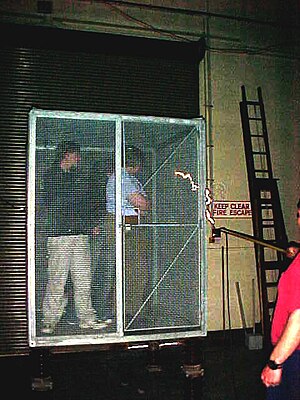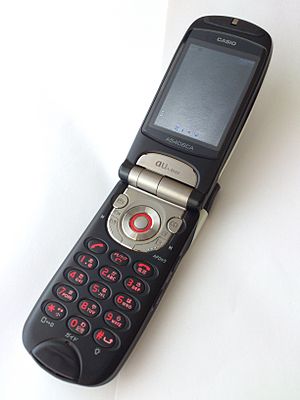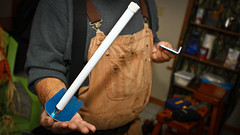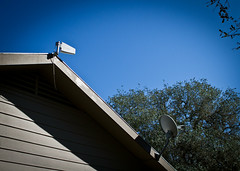Cell phones help us maintain contact with friends and family throughout most of the continental US and much of Europe. But some of the areas that hold large-scale camping events have marginal cellular service.
These miniature marvels have limitations on the distance over which reliable communications can happen. Some sites have spotty service. Others have weak or marginal service. Still others are only served by one of the major cellular providers.
Cell phones provide essentially “line of sight” communications between your cell phone device and the cell phone tower. Many things can impact your ability to make or receive a call. The most obvious way to impact your cell service is to control the distance to the cell tower. If you are closer to a cell tower, reception will be improved. Being further away from a cell tower decreases reception. Generally speaking, cell phone reception will work within 12 miles of a tower site, providing the tower is “line of sight.” You may also be able to make calls from as far away as 22 miles from a cell tower.
Line of sight doesn’t strictly mean that you have a clear view of the cell tower. But some obstructions are deceptively opaque to the radio signals. Leaves of trees and bushes fall into this category. More obstructions mean less signal. Less signal means its harder to

English: The Faraday Cage is in the High voltage Lab of the University of canterbury Engineerig School. In the photo it was running at 110 000 volts, and the spark can be seen on the left where the technician is pointing a probe at the cage. (Photo credit: Wikipedia)
make and receive calls. Metal is the ultimate obstruction – if it is connected to the ground. Scientists use this fact to make Faraday cages to keep radio waves (that also make up cell phone signals) out of an area.
Signals can also be received even though a ridge is between you and the cell tower. And, sometimes you can see the cell tower very close to you, but you can’t get a signal. Both of these facts depend on how the cell tower signals are aimed by the antennas on the tower. What would be nice is a way to amplify the cell signals so that you can make a call when you are in a marginal area.
Your ability to connect to the cell service can be improved in many circumstances by using a cellular phone booster.
Cell phone boosters can use simple whip antennas (like a car radio antenna) or a jogh gain antenna like that shown to the left.
Lower cost cell phone repeaters can be purchased for $200-$300. These boosters come with a simple whip antenna – AND your phone must be placed on a special pad to boost the signal. These boosters are powered from your car’s 12V system and work well. But, be aware that you can drain your car battery if you leave the booster on continuously for a long while.
More capable boosters are also available but they involve more and larger equipment. The equipment includes an external antenna – most often a directional antenna as shown below.
Establishing cell phone service using signal boosting equipment is fairly easy but it does take some technical skill. Simple boosters with one antenna and a contact antenna for the cell phone are the easiest to install. Follow the simple directions. Establishing a link to distant cell towers is more complex and requires some knowledge of transmission systems – and takes some trial and error. All of these boosters include protection to prevent accidentally damaging the cell tower. If you lack adequate skill to set up the more complex boosters, a local distributor may be able to provide you with training.




 cell phone antenna window booster
cell phone antenna window booster
 The way to choose a Right Mobile Signal Booster
The way to choose a Right Mobile Signal Booster

 What is a Mobile Signal Booster for?
What is a Mobile Signal Booster for?


